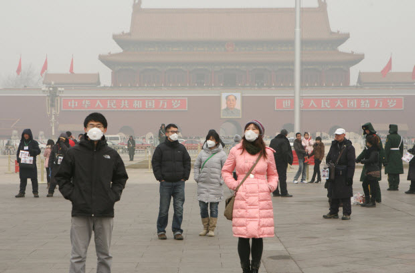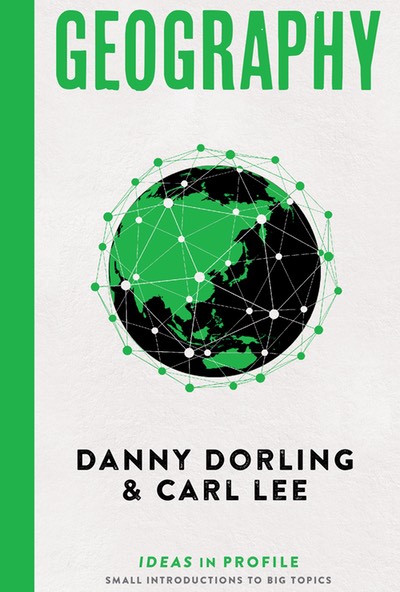Biodiversity is currently declining, leading to a sixth major extinction event – that is, an event on a scale comparable to the last major extinction 65 million years ago that wiped out the dinosaurs. This occurs as humans plunder an increasing proportion of the global biomass, often indirectly, and squeeze what diversity is le into smaller and smaller islands of wild habitat. Chemical alterations to our atmosphere as a consequence of our insatiable urge to burn fossil fuels are having an effect on every square kilometre of our planet, from the highest peaks to the lowest ocean floors.
The scale of air pollution afflicting Chinese cities is now so great that barely an urban citizen remains unaffected in their daily life. The soil on which we invest our future washes off of degraded lands across the world in unprecedented amounts and o en in areas that have until very recently been humanity’s most productive breadbaskets.
For very many generations the Midwest of the USA and China’s Yellow River valley sustained large populations, but now soil erosion is a great threat to both areas. Even if we managed to get a grip on our current destructive tendencies, we clearly have much more to learn, and there will be harm that we are doing in other ways to the environment around us that we often barely recognise as damaging today.

Photo: Air pollution in Tiananmen Square, Beijing
Map: Agricultural Land (© Benjamin Hennig)
It is in the world’s major croplands – the US Midwest, the Eurasian plains, the Deccan plateau in India and the Northern Plains of China – that much of the world’s nutrition is produced. This is where the wheat, maize and rice that are today’s main global food sources for humans around the world are predominantly grown. With two to three more billion mouths to feed in the next few decades, maintaining the ecological stability of the soil and climate in these biologically productive areas is essential. This map shows the planet drawn with the area of each small plot of land sized in proportion to the amount of food crops currently produced there.
Further exploration
If you want to know how energy use in all that we do and all that is around us is a relative measure, especially in relation to the CO2 each act generates, Mike Berners-Lee explains all in How Bad Are Bananas?: The Carbon Footprint of Everything (Pro le Books, 2010).
In 1971 John Rawls published A Theory of Justice (Harvard University Press, revised reprint, 1999). This remains one of the most influential books ever written concerning social justice, and social justice is at the very heart of sustainability. An in-depth investigation into society’s awakening to the challenge of climate change has not been more comprehensively covered than by Mike Hulme in Why We Disagree about Climate Change: Understanding Controversy, Inaction and Opportunity (Cambridge University Press, 2009).
To turn the clock back to when thinking about sustainability was first launched into a sceptical world, read Rachel Carson’s classic Silent Spring (Houghton Mifflin, 1962; reprinted as a Penguin Classic 2000).
Green Euro MP and, until recently, Reader in Green Economics at Cardiff University, Molly Scott Cato has produced a highly readable book (an immense achievement for an economics work) evaluating the multiplicity of approaches to economics that concern the environment. See Environment and Economy (Routledge, 2011; revised edition 2014).
To see the moment when China finally confronted the continuing pollution catastrophe that its rapid industrialisation has brought to most of its population it is possible to watch all 1 hour and 45 minutes of Chai Jing’s documentary 2015 Under the Dome with English subtitles at https://www. youtube.com/watch?v=T6X2uwlQGQM.
There is an increasing number of heterodox economists, radical thinkers and sustainability philosophers who are bringing new thinking and ideas to the ecological and economic crisis that beset the 21st century, but revisiting André Gorz and, particularly, his prescient 1991 work Capitalism, Socialism, Ecology is a rewarding perspective to consider (Verso, 1994; reprinted 2012).
